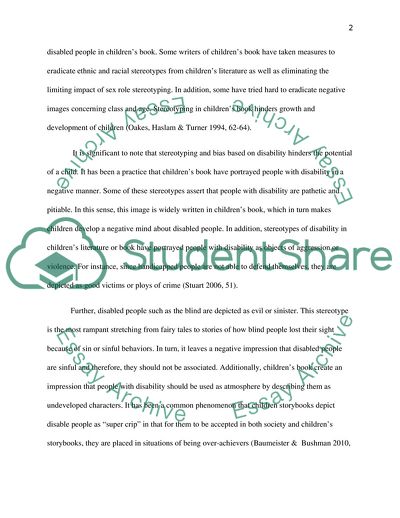Stereotypes in Childrens Storybooks Report Example | Topics and Well Written Essays - 1500 words - 1. https://studentshare.org/literature/1799962-stereotypes-of-disability-in-childrens-story-books
Stereotypes in Childrens Storybooks Report Example | Topics and Well Written Essays - 1500 Words - 1. https://studentshare.org/literature/1799962-stereotypes-of-disability-in-childrens-story-books.


